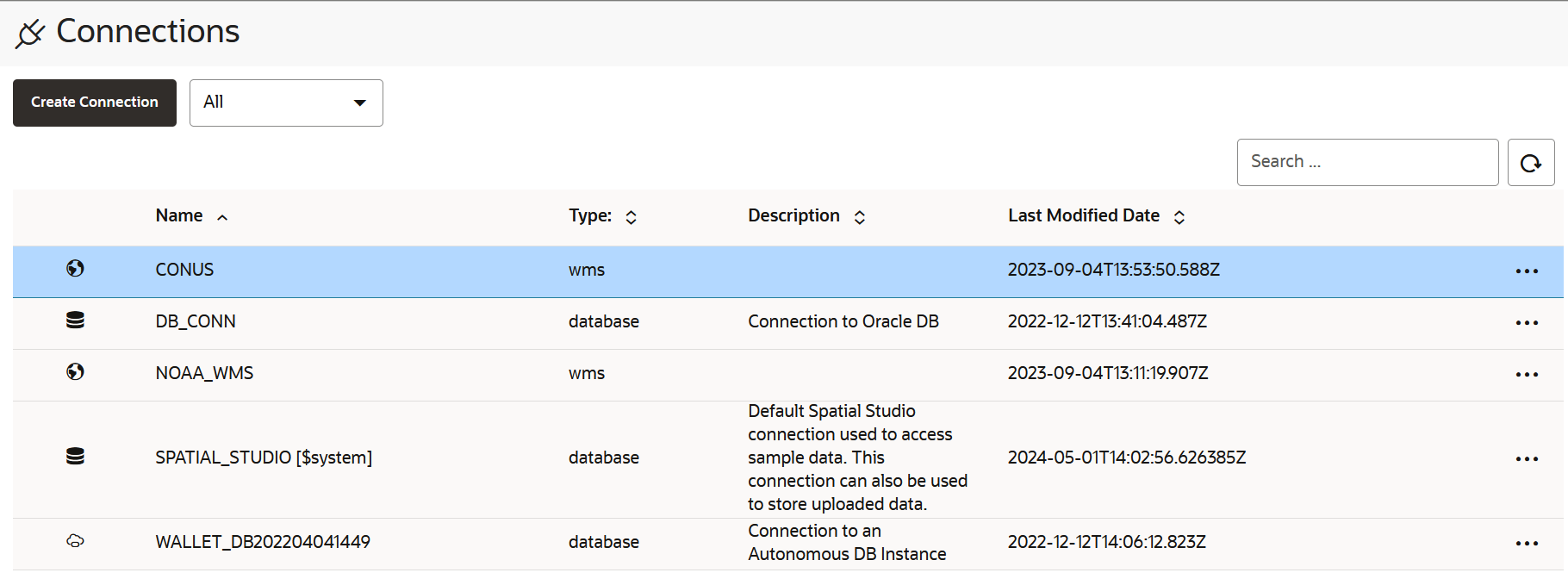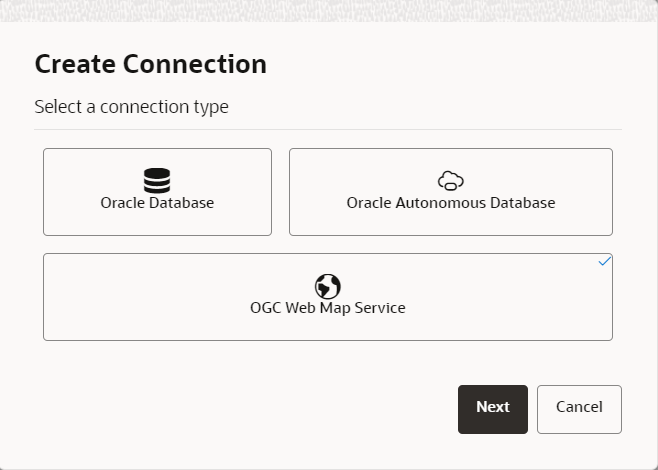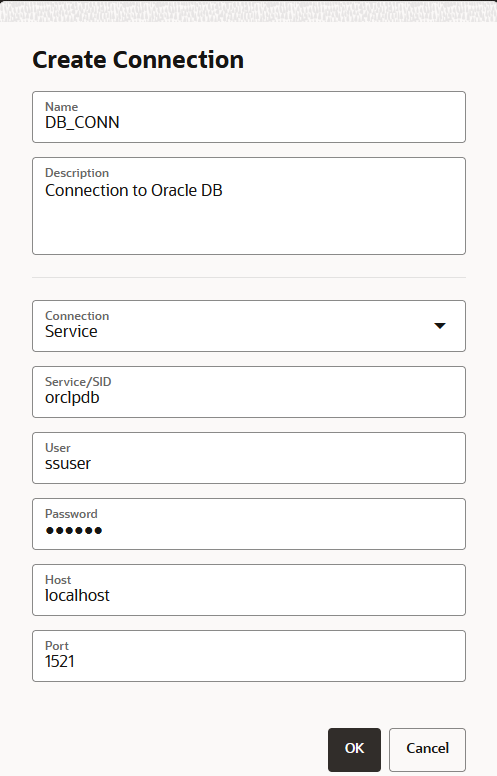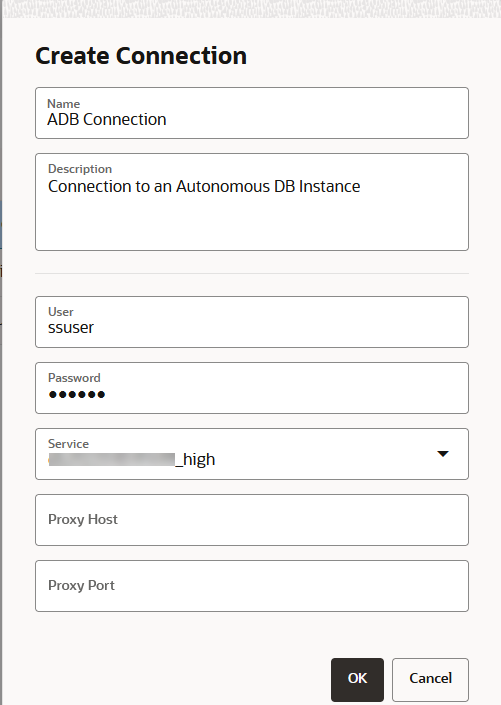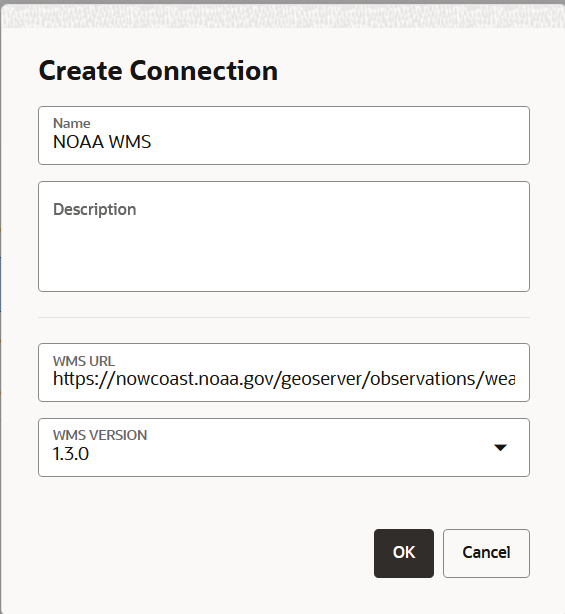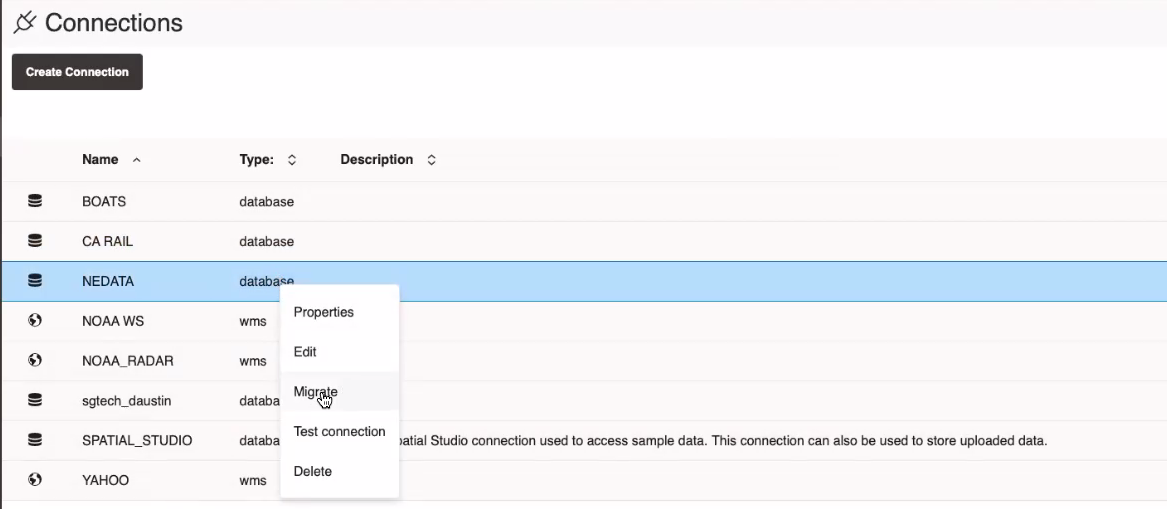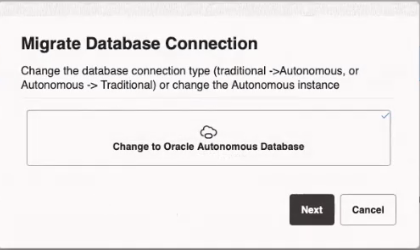3.7 Spatial Studio Connections Page
The Connections page displays all the existing connections and also allows you to create a new connection.
The following figure shows a layout of the Connections page:
You can perform the following actions on the Connections page:
- You can create a new connection, by clicking Create
Connection.
As seen in the preceding figure, you can create a connection to the following sources:
- Oracle Database: You must provide the host, port, schema, and other database authentication details.
- Oracle Autonomous Database: You must provide the wallet and the connection details.
- OGC Web Map Service: You must provide the URL to connect to the WMS service.
- You can also perform the following actions by clicking the hamburger
icon against any displayed connection or by right-clicking a connection row:
- Properties: To view or modify properties of the connection
- Edit: To update the connection details
Note:
You cannot edit the SPATIAL_STUDIO connection on the Connections page. Instead, refer to If the Spatial Studio Repository Schema Password Has Been Changed section. - Migrate: To migrate the connection from one environment to another
- Replace Cloud Wallet: To replace the cloud wallet for your Autonomous Database Connection
- Test Connection: To validate the connection
- Delete: To delete the connection along with all its
datasets
Note:
You cannot delete the SPATIAL_STUDIO connection.
- Creating an Oracle Database Connection
You can create a Spatial Studio connection to any Oracle Database schema. - Creating a Cloud Connection to an Autonomous Database Instance
You can create a Spatial Studio connection to an Autonomous Database instance. - Creating an OGC WMS Connection
You can create a new connection to an external OGC (Open Geospatial Consortium) WMS (Web Map Service) service. - Migrating Database Connections
You can migrate your connections in Spatial Studio between on-premises and cloud database environments.
Parent topic: Using Oracle Spatial Studio
3.7.1 Creating an Oracle Database Connection
You can create a Spatial Studio connection to any Oracle Database schema.
You can perform the following steps to setup a connection to the database:
Parent topic: Spatial Studio Connections Page
3.7.2 Creating a Cloud Connection to an Autonomous Database Instance
You can create a Spatial Studio connection to an Autonomous Database instance.
As a prerequisite, you must download and save the wallet for your Autonomous Database instance from the Oracle Cloud Infrastructure (OCI) console. See Download Client Credentials (Wallets) for more information.
You can perform the following steps to setup a cloud connection to your Autonomous Database instance:
Parent topic: Spatial Studio Connections Page
3.7.3 Creating an OGC WMS Connection
You can create a new connection to an external OGC (Open Geospatial Consortium) WMS (Web Map Service) service.
Note that a WMS service or server typically offers
many individual map layers that can be combined in different orders. The full list
of available map layers, as well as many other important supported functionalities
are all advertised by the WMS server through a standard WMS
GetCapabilities response.
When you create a
new WMS connection, Spatial Studio will be
querying such capabilities against the external WMS server using the standard
GetCapabilities call. Based on the result of such a query, you
will later be able to choose the required WMS map layers that must be included when
creating a new Spatial Studio WMS dataset.
You can perform the following steps to create an OGC WMS connection:
Related Topics
Parent topic: Spatial Studio Connections Page
3.7.4 Migrating Database Connections
You can migrate your connections in Spatial Studio between on-premises and cloud database environments.
You can perform the following steps to migrate a database connection.
Parent topic: Spatial Studio Connections Page
